-
 Bitcoin
Bitcoin $117500
2.15% -
 Ethereum
Ethereum $3911
6.19% -
 XRP
XRP $3.316
10.79% -
 Tether USDt
Tether USDt $1.000
0.01% -
 BNB
BNB $787.2
2.24% -
 Solana
Solana $175.2
4.15% -
 USDC
USDC $0.9999
0.00% -
 Dogecoin
Dogecoin $0.2225
8.40% -
 TRON
TRON $0.3383
0.28% -
 Cardano
Cardano $0.7868
6.02% -
 Stellar
Stellar $0.4382
9.34% -
 Hyperliquid
Hyperliquid $40.92
7.56% -
 Sui
Sui $3.764
7.63% -
 Chainlink
Chainlink $18.48
10.66% -
 Bitcoin Cash
Bitcoin Cash $582.1
1.88% -
 Hedera
Hedera $0.2601
6.30% -
 Avalanche
Avalanche $23.33
4.94% -
 Ethena USDe
Ethena USDe $1.001
0.02% -
 Litecoin
Litecoin $122.3
2.04% -
 UNUS SED LEO
UNUS SED LEO $8.969
-0.27% -
 Toncoin
Toncoin $3.339
0.86% -
 Shiba Inu
Shiba Inu $0.00001287
4.30% -
 Uniswap
Uniswap $10.43
7.38% -
 Polkadot
Polkadot $3.861
5.08% -
 Dai
Dai $1.000
0.02% -
 Bitget Token
Bitget Token $4.513
3.41% -
 Monero
Monero $267.7
-6.18% -
 Cronos
Cronos $0.1499
4.14% -
 Pepe
Pepe $0.00001110
5.15% -
 Aave
Aave $284.9
8.28%
What are the types of orders for Gate.io contract? What scenarios are limit orders and market orders suitable for?
Gate.io offers various order types like market, limit, stop, stop-limit, and trailing stop orders, each suited for different trading scenarios and strategies.
May 03, 2025 at 12:42 pm
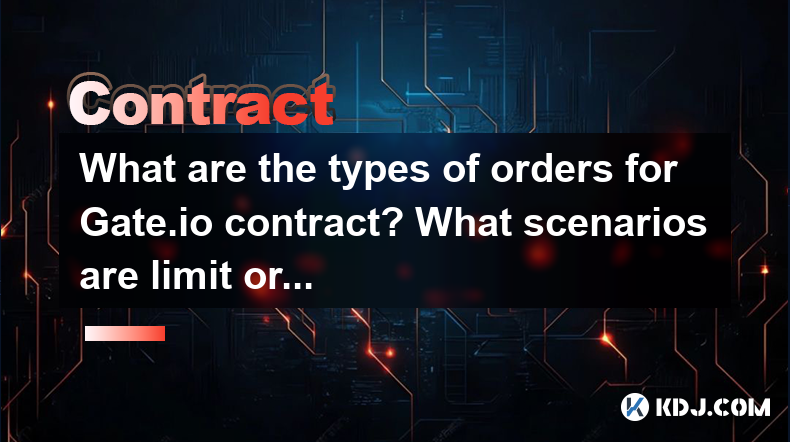
Gate.io, a leading cryptocurrency exchange, offers a variety of order types for its contract trading platform. Understanding these order types and their appropriate use cases can significantly enhance your trading strategy. In this article, we will explore the different types of orders available on Gate.io and discuss the scenarios in which limit orders and market orders are most suitable.
Types of Orders on Gate.io
Gate.io provides several types of orders to cater to the diverse needs of traders. The main types of orders include:
- Market Orders
- Limit Orders
- Stop Orders
- Stop-Limit Orders
- Trailing Stop Orders
Each of these order types serves a specific purpose and can be utilized based on your trading strategy and market conditions.
Market Orders
A market order is an order to buy or sell a cryptocurrency at the best available current price. When you place a market order, the trade is executed immediately at the prevailing market price. This type of order is useful when you prioritize speed over price.
Scenarios Suitable for Market Orders
Market orders are most suitable in the following scenarios:
- High Volatility: When the market is highly volatile, and you need to enter or exit a position quickly, a market order ensures that your trade is executed without delay.
- Urgent Trades: If you need to execute a trade urgently, such as closing a losing position to limit losses, a market order is the fastest way to do so.
- Liquidity: In highly liquid markets, market orders can be executed with minimal slippage, making them a good choice for large trades where price impact is a concern.
Limit Orders
A limit order allows you to specify the price at which you want to buy or sell a cryptocurrency. The order will only be executed if the market reaches your specified price. This type of order gives you more control over the price at which your trade is executed.
Scenarios Suitable for Limit Orders
Limit orders are most suitable in the following scenarios:
- Price Control: When you have a specific price target in mind, a limit order ensures that your trade is executed at that price or better.
- Low Volatility: In less volatile markets, limit orders can be used to take advantage of small price movements without the risk of significant slippage.
- Long-Term Trading: If you are a long-term trader looking to enter or exit positions at specific price levels, limit orders allow you to set your orders and wait for the market to reach your desired price.
Stop Orders
A stop order is an order to buy or sell a cryptocurrency once the price reaches a specified level, known as the stop price. Once the stop price is reached, the stop order becomes a market order and is executed at the best available price.
Using Stop Orders
Stop orders are useful for:
- Risk Management: They can be used to limit losses by automatically closing a position if the price moves against you.
- Breakout Trading: Traders can use stop orders to enter a position once the price breaks out of a certain range.
Stop-Limit Orders
A stop-limit order combines the features of a stop order and a limit order. Once the stop price is reached, the order becomes a limit order and is executed at the specified limit price or better.
Using Stop-Limit Orders
Stop-limit orders are suitable for:
- Precision: When you want to ensure that your trade is executed at a specific price after a certain level is reached.
- Volatility Protection: They can protect you from significant price movements by ensuring that your order is only executed within a predefined price range.
Trailing Stop Orders
A trailing stop order is a stop order set at a percentage or dollar amount below the market price for a long position or above the market price for a short position. The trailing stop price adjusts as the market price moves in your favor, locking in profits while limiting losses.
Using Trailing Stop Orders
Trailing stop orders are useful for:
- Profit Maximization: They allow you to stay in a position as long as the market moves in your favor, automatically locking in profits.
- Risk Management: They help manage risk by automatically closing a position if the market moves against you, without the need to constantly monitor the market.
How to Place Orders on Gate.io
To place orders on Gate.io, follow these steps:
- Log in to your Gate.io account.
- Navigate to the Contract Trading section.
- Select the cryptocurrency pair you want to trade.
- Choose the type of order you want to place (Market, Limit, Stop, Stop-Limit, or Trailing Stop).
- Enter the necessary parameters for your order:
- For a market order, enter the quantity you want to buy or sell.
- For a limit order, enter the quantity and the limit price.
- For a stop order, enter the quantity and the stop price.
- For a stop-limit order, enter the quantity, stop price, and limit price.
- For a trailing stop order, enter the quantity and the trailing amount or percentage.
- Review your order details and submit the order.
Frequently Asked Questions
Can I cancel an order on Gate.io?
Yes, you can cancel an order on Gate.io at any time before it is executed. To cancel an order, go to the "Open Orders" section, find the order you want to cancel, and click the "Cancel" button.
What is the difference between a stop order and a stop-limit order?
A stop order becomes a market order once the stop price is reached, while a stop-limit order becomes a limit order at the stop price. The key difference is that a stop-limit order allows you to specify a limit price, ensuring that your trade is executed within a predefined price range.
How does Gate.io handle slippage on market orders?
Gate.io aims to minimize slippage on market orders by executing them at the best available price. However, in highly volatile markets, there may be some slippage due to rapid price movements. It's important to consider this when placing market orders.
Are there any fees associated with different types of orders on Gate.io?
Yes, Gate.io charges different fees for different types of orders. Market and limit orders typically have a standard trading fee, while stop orders, stop-limit orders, and trailing stop orders may incur additional fees. Always check the fee schedule on Gate.io for the most current information.
Disclaimer:info@kdj.com
The information provided is not trading advice. kdj.com does not assume any responsibility for any investments made based on the information provided in this article. Cryptocurrencies are highly volatile and it is highly recommended that you invest with caution after thorough research!
If you believe that the content used on this website infringes your copyright, please contact us immediately (info@kdj.com) and we will delete it promptly.
- Tron's Sell-Off Spurs Altcoin Shift: What's Next for TRX?
- 2025-08-08 08:30:12
- RUVI Presale: Is the Growth Potential Real?
- 2025-08-08 09:10:12
- Sleep Token's US Takeover: Thornhill Rides the 'Even In Arcadia' Wave
- 2025-08-08 08:30:12
- FTT Token's Wild Ride: Creditor Repayments vs. Market Drop - A New Yorker's Take
- 2025-08-08 07:10:12
- Floki Crypto Price Prediction: Riding the Robinhood Rocket or Just a Meme?
- 2025-08-08 07:15:12
- EigenLayer, Restaking, and Ethereum: Navigating the Hype and the Hazards
- 2025-08-08 06:30:12
Related knowledge

What are the specific maker and taker fees on KuCoin Futures?
Aug 08,2025 at 08:28am
Understanding Maker and Taker Fees on KuCoin FuturesWhen trading on KuCoin Futures, users encounter two primary types of fees: maker fees and taker fe...
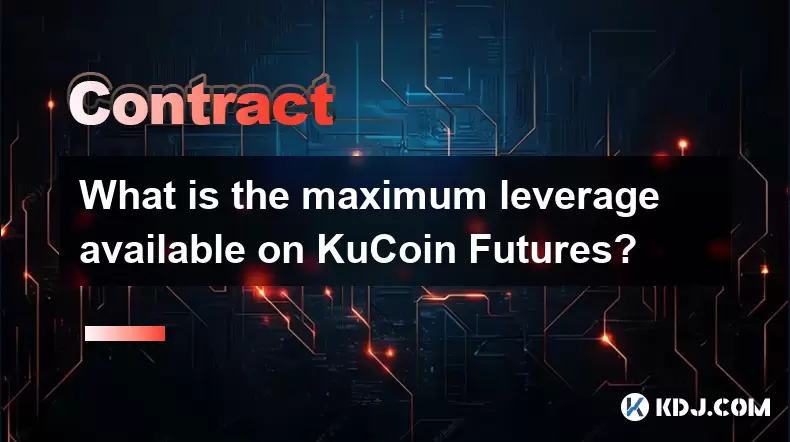
What is the maximum leverage available on KuCoin Futures?
Aug 08,2025 at 10:21am
Understanding Leverage in KuCoin Futures TradingLeverage in KuCoin Futures allows traders to control a larger position size using a smaller amount of ...
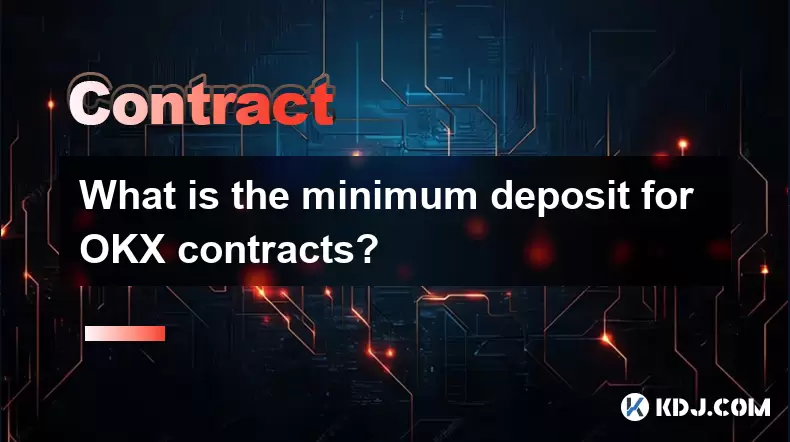
What is the minimum deposit for OKX contracts?
Aug 08,2025 at 07:00am
Understanding OKX Contract Trading BasicsOKX is one of the leading cryptocurrency derivatives exchanges, offering a wide range of perpetual and future...
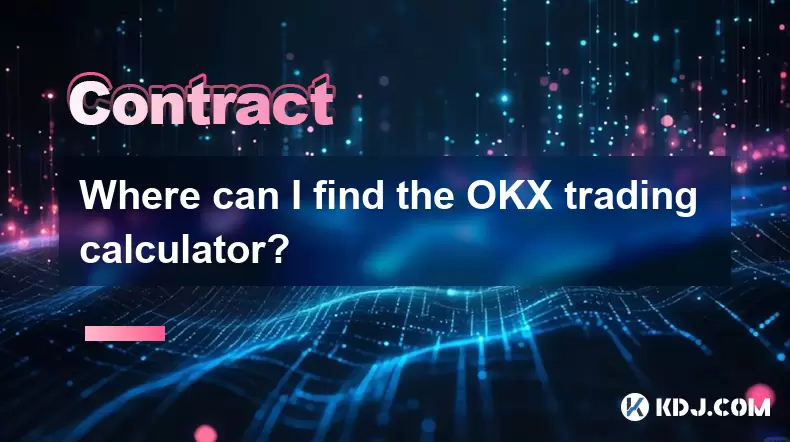
Where can I find the OKX trading calculator?
Aug 08,2025 at 07:49am
Understanding the OKX Trading Calculator FunctionalityThe OKX trading calculator is a powerful analytical tool designed to assist traders in estimatin...
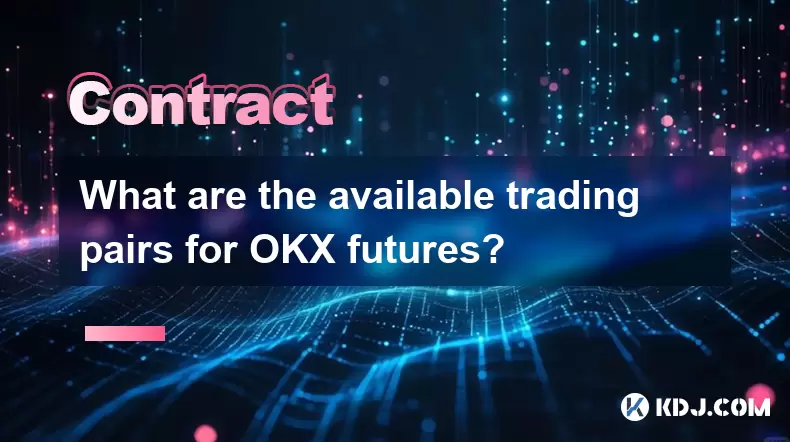
What are the available trading pairs for OKX futures?
Aug 08,2025 at 08:49am
Understanding OKX Futures Trading PairsOKX is one of the leading cryptocurrency derivatives exchanges, offering a wide range of futures trading pairs ...
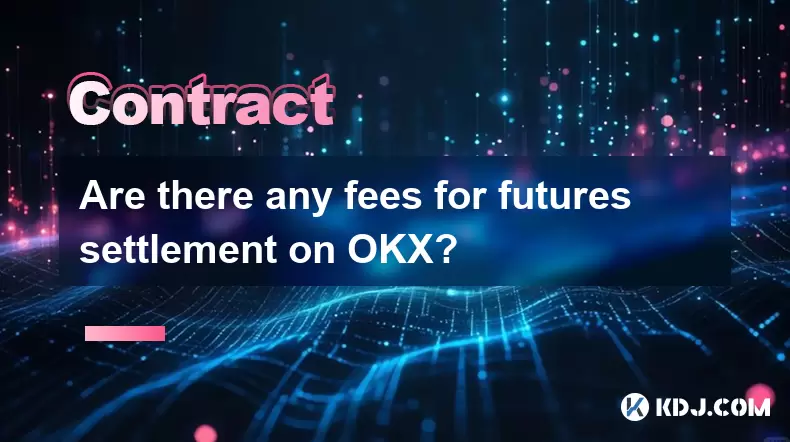
Are there any fees for futures settlement on OKX?
Aug 08,2025 at 05:35am
Understanding Futures Settlement on OKXFutures settlement on OKX refers to the process by which open futures contracts are automatically closed or mar...

What are the specific maker and taker fees on KuCoin Futures?
Aug 08,2025 at 08:28am
Understanding Maker and Taker Fees on KuCoin FuturesWhen trading on KuCoin Futures, users encounter two primary types of fees: maker fees and taker fe...

What is the maximum leverage available on KuCoin Futures?
Aug 08,2025 at 10:21am
Understanding Leverage in KuCoin Futures TradingLeverage in KuCoin Futures allows traders to control a larger position size using a smaller amount of ...

What is the minimum deposit for OKX contracts?
Aug 08,2025 at 07:00am
Understanding OKX Contract Trading BasicsOKX is one of the leading cryptocurrency derivatives exchanges, offering a wide range of perpetual and future...

Where can I find the OKX trading calculator?
Aug 08,2025 at 07:49am
Understanding the OKX Trading Calculator FunctionalityThe OKX trading calculator is a powerful analytical tool designed to assist traders in estimatin...

What are the available trading pairs for OKX futures?
Aug 08,2025 at 08:49am
Understanding OKX Futures Trading PairsOKX is one of the leading cryptocurrency derivatives exchanges, offering a wide range of futures trading pairs ...

Are there any fees for futures settlement on OKX?
Aug 08,2025 at 05:35am
Understanding Futures Settlement on OKXFutures settlement on OKX refers to the process by which open futures contracts are automatically closed or mar...
See all articles

























































































